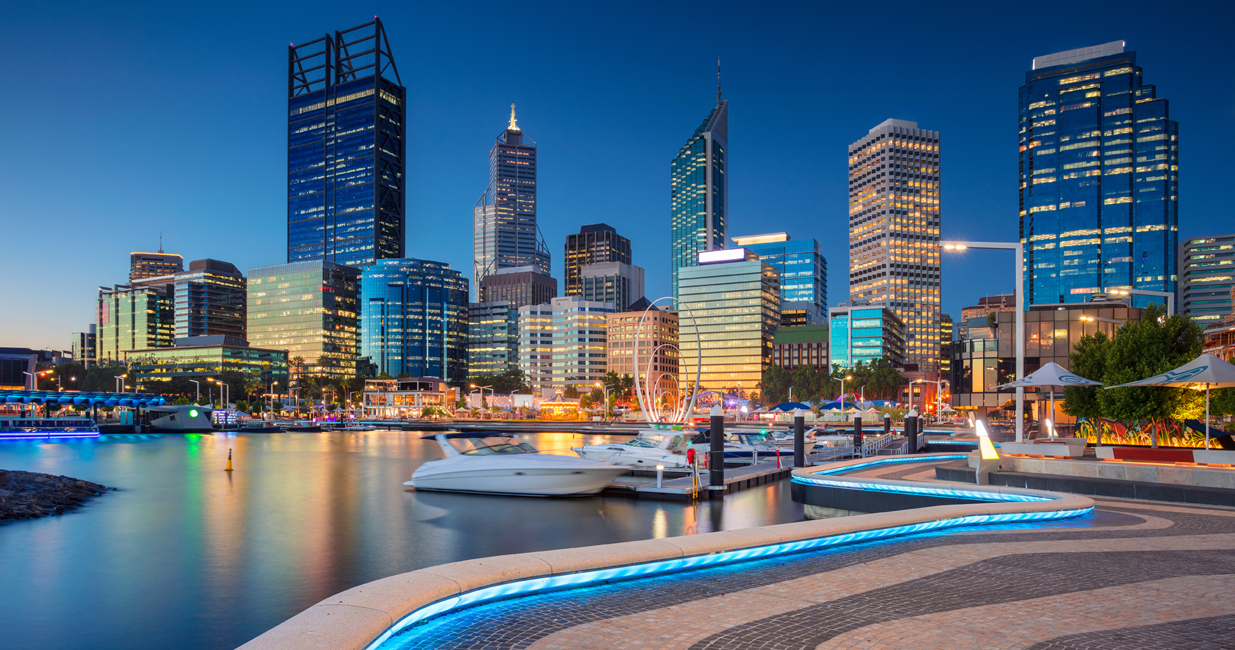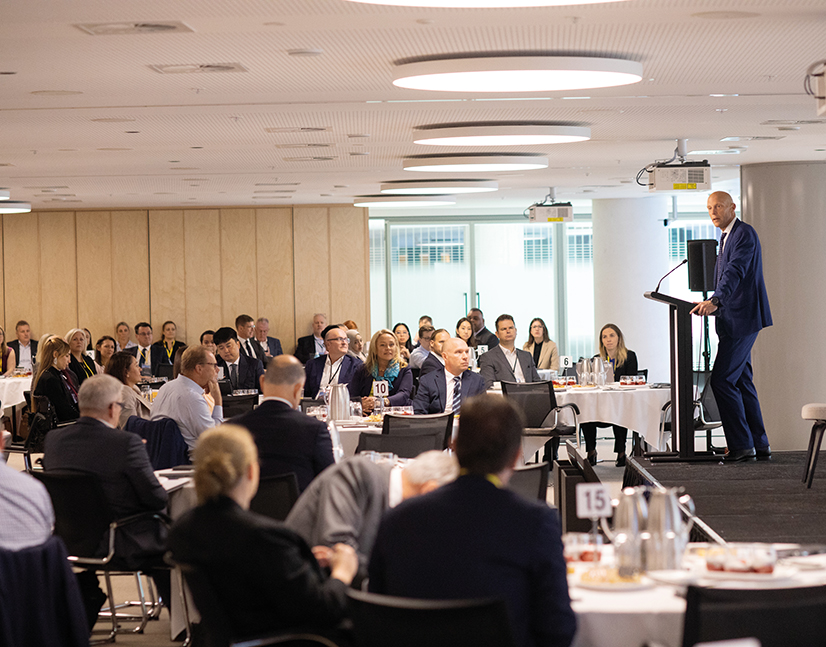
The outlier: WA charts its own course to pandemic exit
Bolstered by a – for a time – record iron-ore price and a largely COVID-19-free existence, Western Australia has enjoyed a unique economic rebound in 2021. The state’s premier and treasurer, Mark McGowan, explains why the state government is keeping cautious budget and public-health policy settings in place.
State government revenue in Western Australia (WA) is uniquely volatile among Australian states given the role of the resources sector in the state economy. While the latest budget clearly illustrates that the state is enjoying an upswing period, how is the government planning to insulate against future reversion?
WA’s economy has performed the strongest in the nation throughout the COVID-19 pandemic, given the state’s efforts to crush any outbreaks of the virus quickly and keep our economy, including our mining industry, open.
Revenues have been stronger across the board, including tax collections and royalties. Our open economy has allowed the state to take advantage of a high iron-ore price, which delivered a significant windfall in 2020/21. However, we do not expect the high price will last and we have budgeted for the fact iron ore prices are very volatile.
This includes making prudent use of windfall royalty revenues when they arise, as we did in our recent budget by establishing a number future funds that set aside money now for emerging priorities like a new women and babies hospital, additional social housing, another desalination plant and expansion of the state’s softwood timber plantation.
There are also conservative economic and revenue forecasts underpinning our budget. Our iron-ore price assumptions are very prudent, assuming a reversion to the long-run average of US$66 per tonne by March 2022 and across the forward estimates.
Finally, we budget for meaningful operating surpluses. The 2021/22 budget forecasts general government operating surpluses, of at least A$1.5 billion (A$1.1 billion), in each year of the forward estimates – the only state to do so. This gives us the flexibility to respond to crises, like the COVID-19 global pandemic, as they emerge and also to fund infrastructure and pay down debt.
In addition, the long overdue restructure in the GST [goods and services tax] distribution has ensured a much greater degree of stability in the state’s revenue base, creating a more even and consistent spread between taxation revenue, Commonwealth grants and royalty revenue. The GST reforms set a floor under our GST share but also provide a hedge should royalty collections materially fall.
At roughly US$100 per tonne in late September from a peak of US$235 per tonne, the iron-ore price has already come back down to closer to its long-run average. How much downside risk is there in that forecast – especially in light of the Evergrande situation in China?
The budget assumes the iron-ore price will average US$121.30 in 2021/22 before falling to US$66 from 2022/23 onwards, which is the long-run average. To meet the assumed price for 2021/22, the iron-ore price needs to average around US$105 for the remainder of the financial year.
Assuming no change in the Australian dollar-US dollar exchange rate or volumes, iron-ore royalties rise or fall by approximately A$82 million for every US$1 variation in the price of iron ore from the forecast.
The budget is also sensitive to the exchange-rate, as every US$0.01 cent decrease or increase in the Australian dollar changes royalty income – and North West Shelf grants – by circa A$147 million. This is somewhat of a natural hedge, as a declining iron-ore price typically puts downward pressure on the Australian dollar.
Notwithstanding a slowing property market in China, global supply and demand conditions for iron ore are considered to remain favourable for WA iron-ore producers given the low-cost and high-quality nature of our large producers.
Overall, what would you say to investors in Western Australian Treasury Corporation (WATC) bonds who are concerned about WA’s exposure to China?
WA continues to have a strong trading relationship with China across a broad range of exports. While we continue to look for opportunities to diversify across markets and regions, the strength of our trading relationship with China remains a high priority for my government.
The iron-ore trade between WA and China is also a mutually beneficial one. WA is the largest global supplier and we remain confident the volume produced by our large, efficient and low-cost iron-ore producers will continue to withstand any diplomatic tensions at national level.
“The WA economy is one of the strongest in the world. Containing community spread of COVID-19 through short and sharp lockdowns – totalling only 12 days since the initial outbreak in the June quarter of 2020 – and keeping our major industries operating at full capacity throughout the pandemic have been keys to this success.”
GST redistribution is back on the agenda. Has the updated redistribution system failed to resolve the fundamental problem of amplifying outlier states’ economic performance by virtue of the lagging effect of payments? Does WA expect to be forced back to the negotiation table in the coming years?
Both the prime minister and the leader of the opposition have committed publicly to the GST reforms remaining unchanged. Currently, all states and territories are better off than forecast when the reforms were finalised in 2018, with the upside in iron-ore prices still redistributed in part to other jurisdictions, as well as supporting Commonwealth company-tax revenue.
The phase-in of the reforms, including a floor of 70 per cent – increasing to 75 per cent from 2024/25 – on any jurisdiction’s per capita share and the shift to equalising to the strongest of NSW [New South Wales] or Victoria, have been critical in stabilising the GST system while still supporting the core objectives of horizontal fiscal equalisation. WA will continue strongly to defend these changes, which are embedded in legislation passed by the federal parliament.
WA provides the largest revenue contribution to the federation – more than ten times the only other net contributor, NSW. All other states and territories are net recipients and do not contribute financially to the federation.
One of the challenges the last WA government faced in the resources boom was spiralling public-sector cost due to capacity constraints, especially labour, at exactly the time it needed to provide infrastructure for a growing state. How are the variable inputs to state-government cost tracking this time round – especially labour cost? How significant an influence is the ongoing closure of the state and national border having on ability to maintain wage-cost discipline?
The economic cycle WA is experiencing is quite distinct from the one experienced last decade. While there has been a welcome pick-up in business investment, particularly in the resources sector, the scale is not comparable with the mining investment boom that occurred earlier in the century – which was the biggest business investment boom the state, and arguably the country, has ever seen.
As for the competition for labour, there is as yet little evidence of a sharp pick-up in wage inflation, with the wage price index increasing by only 1.5 per cent over 2020/21. We are forecasting this will pick up modestly over 2021/22, to 2.25 per cent. While net overseas migration has traditionally played a key role in meeting the state’s demand for labour, it is important to note that net interstate migration is now positive, for the first time in eight years. We are also investing very heavily in our TAFE sector to grow the skills of our local workforce.
Regarding public-sector wages, we implemented the A$1,000 wages policy in 2017 as one of the measures to rein in expenditure growth. This policy has been in place for the last four years and has been successful in helping to put the state’s finances on a more sustainable trajectory.
In the recent state budget, we announced the bring-forward of new wages policy, subject to a review that is currently being undertaken. We expect to implement the new policy in early 2022. It is important that the new policy remains financially sustainable.
“With ESG factors an increasing priority for investors, and governments being natural issuers of ESG bonds, establishing an ESG issuance programme is a priority going forward. Even if our funding requirements do not align with this in the immediate term, it is expected that they will over time.”
In its post-budget analysis, S&P Global Ratings notes that WA “has bumped up its infrastructure budget to more than A$30 billion over the next four years, but under-delivery is common”. What are the state government’s infrastructure priorities and how confident is it that it will be able to deliver on its commitments?
The WA government has committed to a record A$30.7 billion infrastructure spend over the next four years to expand our economic capacity, meet the needs of our growing population and create jobs.
A review of the works programme was conducted in the lead-up to the budget, in consultation with industry, to smooth our asset-investment pipeline. Some A$2.6 billion in project cash flows were pushed out across the forward estimates.
The aim of this work is to extend the benefits of the pipeline of works over the longer term and ensure our investment complements rather than competes with the private sector. The government will continue to take into account the latest information on the construction industry’s capacity to deliver as we move forward.
We have also created a new Major Projects Directorate in the Department of Finance and an Office of Major Transport Infrastructure Delivery to ensure the efficient delivery of major projects.
WA has been celebrated and attacked for its border policy and commitment to virus elimination during the pandemic. It seems some sectors – such as intrastate tourism – may have benefited from the closed border and of course zero-COVID-19 has enabled the resources industry to keep functioning. But which sectors have been the winners and losers, and how has the state government stepped in to provide support where needed?
The WA economy is one of the strongest in the world, with the size of our domestic economy now 5.7 per cent larger than it was pre-pandemic. Containing community spread of COVID-19 through short and sharp lockdowns – totalling only 12 days since the initial outbreak in the June quarter of 2020 – and keeping our major industries operating at full capacity throughout the pandemic have been keys to this success.
At the same time, border restrictions have meant that money normally spent overseas by WA has been spent locally – supporting many sectors that would normally rely on interstate or overseas visitors, including retail trade and hospitality.
However, while WA has enjoyed a strong recovery, we have been mindful that some pockets of our economy have been affected. These industries have been supported by a range of measures that form part of the A$9 billion we have committed in COVID-19 response and recovery initiatives.
There has been a lot of speculation about divergent paths among Australian states moving into 2022 as the vaccination and reopening process moves at different paces. Does WA have a stated policy of opening state borders at a certain vaccination percentage? If so, what is it – and if not what will the state government want to see before moving?
WA borders remain open to low-risk Australian jurisdictions. WA is currently open to all states and territories other than NSW and Victoria – these states are grappling with large delta outbreaks.
Border controls are our best defence but, if the virus sneaks in ahead of high vaccination rates, public health and safety measures will be required, relevant to our vaccination rate and the size of the outbreak.
WA’s vaccination rate continues to climb and we continue to invest heavily in growing our vaccination effort. We will remove our border controls once the health advice supports it being safe to do so.
WATC has yet to issue green, social and sustainability (GSS) bonds and, while the decision to do so or not in part rests with the treasury corporation, state-government direction and preference clearly also play a role. Is GSS funding something the bond market might expect to see put on WATC’s agenda?
Yes, we have been watching closely the growing success in GSS labelled issuance in supporting good environmental, social and governance (ESG) outcomes and supporting funding programmes. WA will soon release an information pack for investors in WA government bonds articulating the state government’s ESG credentials. From this start, WATC will develop a framework that will allow for GSS issuance, subject to market conditions and the state’s broader borrowing strategy.
Healthcare investment is clearly a state-government priority given the stretched state health system. Does this provide a specific opportunity to align with social-themed funding? Does the fact a significant amount of investment is going to be surplus – rather than debt – funded negate the appeal of GSS financing?
A third consecutive cash surplus and a reduction in net debt projected for the total public sector in 2021/22 has ensured that WATC’s funding task is primarily focused on debt maturity and targeted debt retirement.
With ESG factors an increasing priority for investors, and governments as providers of public services being natural issuers of ESG bonds, establishing an ESG issuance programme is a priority going forward. Even if our funding requirements do not align with this in the immediate term, it is expected that they will over time.

HIGH-GRADE ISSUERS YEARBOOK 2023
The ultimate guide to Australian and New Zealand government-sector borrowers.

WOMEN IN CAPITAL MARKETS Yearbook 2023
KangaNews's annual yearbook amplifying female voices in the Australian capital market.










